Mumbai International
Airport Looking For Bailout

Mumbai International Airport
in India’s financial capital is in dire need of a savior. The present
airport – undergoing large-scale renovation and upgradation –
has a maximum capacity of 40 million passengers, which it will attain
in the next three years in 2013. With that in mind, the Civil Aviation
Ministry decided to set up a Greenfield airport at Navi Mumbai (or New
Mumbai), hyped as the largest planned city in the world. However, the
project is still a long way off.
Caught in the quagmire of environmental
clearances (there are mangrove forests in the area that cannot be destroyed),
the airport cannot be ready before 2015. Simply put, that means for two
years from 2013 onwards, the present Mumbai airport will not be able to
accommodate any more new flights, domestic or international. As a result,
cargo would have to be diverted to airports at Pune or Bangalore.
To top it all off, the Government of the
state of Maharashtra (Mumbai is the capital of the state) has yet to make
the first moves on the proposed Pune international airport (slowly transforming
into another IT hub, Pune is around 100 km from Mumbai).
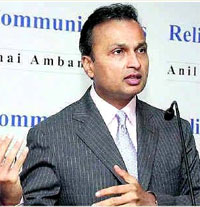 However, air cargo stakeholders can take heart in the fact that Anil Ambani's
Reliance Airport Developers Private Limited (RADPL) has taken a keen interest
in the Baramati airport (250 km away from Mumbai) to ensure that it is
upgraded to facilitate landing of international flights. Baramati, known
as the political powerhouse of Maharashtra and home to the formidable
strongman of Indian politics, Sharad Pawar, (below left) who is presently
the Agriculture Minister in the cabinet of Prime Minister Dr. Manmohan
Singh, is also well known for its exportable grapes and sugar.
However, air cargo stakeholders can take heart in the fact that Anil Ambani's
Reliance Airport Developers Private Limited (RADPL) has taken a keen interest
in the Baramati airport (250 km away from Mumbai) to ensure that it is
upgraded to facilitate landing of international flights. Baramati, known
as the political powerhouse of Maharashtra and home to the formidable
strongman of Indian politics, Sharad Pawar, (below left) who is presently
the Agriculture Minister in the cabinet of Prime Minister Dr. Manmohan
Singh, is also well known for its exportable grapes and sugar.
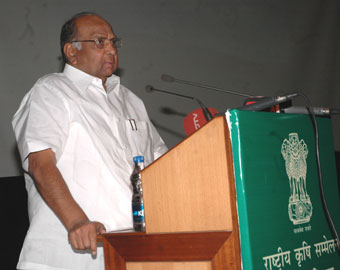 A member of the Board of Overseers at the
Wharton School of the University of Pennsylvania, his alma mater, Anil
Ambani (above right) is the younger brother of Mukesh Ambani, one of the
richest industrialists in the world. RADPL operates airstrips at Baramati,
Yavatmal, Nanded, Latur and Osmanabad, all small cities in Maharashtra.
A member of the Board of Overseers at the
Wharton School of the University of Pennsylvania, his alma mater, Anil
Ambani (above right) is the younger brother of Mukesh Ambani, one of the
richest industrialists in the world. RADPL operates airstrips at Baramati,
Yavatmal, Nanded, Latur and Osmanabad, all small cities in Maharashtra.
RADPL appointed international consultants
Louis Berger Group and Knight Frank to prepare a master plan for Baramati
airport and also carry out an economic and technical feasibility study.
Expected to be completed this month, the study will point out the ways
in which Baramati airport can be transformed into a major cargo and passenger
airport.
Baramati, incidentally, has a number of
advantages: good dry weather throughout the year, large tracts of land
and its proximity to Mumbai and Pune.
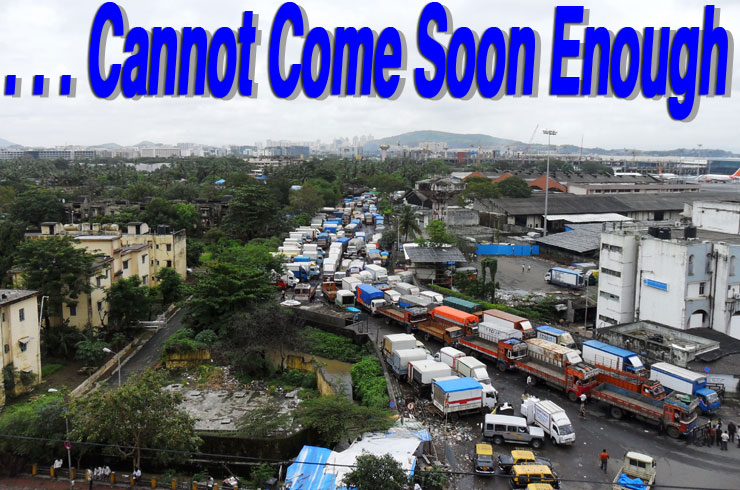
Long queue of trucks at the entrance of the air cargo complex at Mumbai
International Airport
At the beginning of August, an accident
shut down Jawaharlal Nehru Port Trust (JNPT) at Mumbai. A container vessel,
MSC Chitra, collided with a break-bulk vessel, Khalizia-III. This event
should have served as a valuable lesson for the air cargo sector.
That did not happen.
Around 400-500 tonnes of export cargo is
unloaded every day at Mumbai airport, but the trucks cannot move out due
to congestion at the airport. The extraordinarily long queues of trucks
outside the Air Cargo Complex are witness to the woeful conditions prevailing
at one of the country’s top international airports. This, despite
the fact that the Mumbai airport (or the Chhatrapati Shivaji International
Airport (CSIA), as it is known) had chalked out expansion plans for cargo
infrastructure in phases.
Most cargo forwarders and stakeholders in
the cargo business maintain that while the passenger section of the airport
has been completely revamped, the cargo section remains virtually where
it was before the airport was taken over by the private operator, GVK.
What has upset almost all air cargo stakeholders
at Mumbai is that while GVK has gone ahead and upgraded the passenger
terminal, it has done “nothing” for cargo. In fact, after
it was given charge of the airport, the private operator told the Air
Cargo Agents Association of India (ACAAI) that there would be a state-of-the-art
air cargo complex at the airport, the first phase of which would be ready
by 2010, while the second and third phases would be ready in 2015 and
2020, respectively. In fact, the cargo facilities at the CSIA continue
to function with almost the same infrastructure that existed back in 1977.
 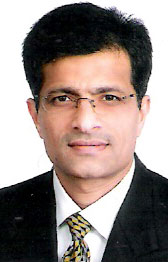 Said
J. Krishnan, (left) President, ACAAI, “In India, there has been
no foreign direct investment (FDI) in infrastructure as regulations in
infrastructure have been rather lukewarm. Our expectations have been belied
and we are totally disappointed. Cargo has been conveniently sidelined.
It is cargo that adds to the economy.” Said
J. Krishnan, (left) President, ACAAI, “In India, there has been
no foreign direct investment (FDI) in infrastructure as regulations in
infrastructure have been rather lukewarm. Our expectations have been belied
and we are totally disappointed. Cargo has been conveniently sidelined.
It is cargo that adds to the economy.”
Ketan Tanna, (right) former President of
ACAAI and a freight forwarder, pointed out that the “percentage
share of total freight traffic at Mumbai Airport is 31.22 percent while
Delhi is 25.11 percent and in Chennai it is 16.05 percent; that totals
to 72 percent approximately, while the increase in cargo infrastructure
is near nil.”
Bharat Thakkar, Vice-President, ACAAI agreed.
He said, “When GVK took over in 2006, following the privatization
of the CSIA, the cargo trade body was informed that we would be provided
with one of the world’s best airports by 2010.” He also pointed
out that all the stakeholders, who are made up of exporters, importers,
customs forwarders, and freight forwarders, continuously gather for trade
facilitation meetings where lack of facilities is emphasized, but nothing
has happened yet.
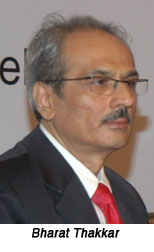  Christoph
Remund, (right) CEO, DHL and one of the members of the ACAAI managing
committee, was more forthright: “The impact of the development going
on at the Mumbai airport has now reached the level where it is seriously
impacting the trade. Inefficiencies and delays have become common. Exporters
are missing their deadlines with their customers overseas and are not
able to deliver their wares on time. Sometimes, we even have to face penalties
and cancellations of bookings and there is a huge constraint on our staff
with the extra work and long hours.” Christoph
Remund, (right) CEO, DHL and one of the members of the ACAAI managing
committee, was more forthright: “The impact of the development going
on at the Mumbai airport has now reached the level where it is seriously
impacting the trade. Inefficiencies and delays have become common. Exporters
are missing their deadlines with their customers overseas and are not
able to deliver their wares on time. Sometimes, we even have to face penalties
and cancellations of bookings and there is a huge constraint on our staff
with the extra work and long hours.”
The airport’s cargo facility has only
12 truck dock areas – totally insufficient in comparison to other
cities. Delhi, for example, has 30 truck dock areas. Tanna pointed out
that air cargo was a revenue-generating business and “today we are
paying the terminal storage and processing (TSP) charges that are at par
with international standards, but in exchange there are no facilities
available.”
Pointing out the lack of truck docking facilities,
Bharat Thakkar also said that a truck could only deliver one load per
day. “Expenses are going up and with just one trip a day, we are
forced to hire more vehicles at higher costs. Freight forwarders have
to bear these extra costs. Our clients are of the opinion that we are
not competent enough to put pressure on the airport authorities.”
The ACAAI members have listed out these
inadequacies. Apparently, the CSIA has started designing another blueprint
for the air cargo complex and have assured the air cargo stakeholders
that interim facilities will be in place soon. One will have to wait and
watch.
Tirthankar Ghosh
|



